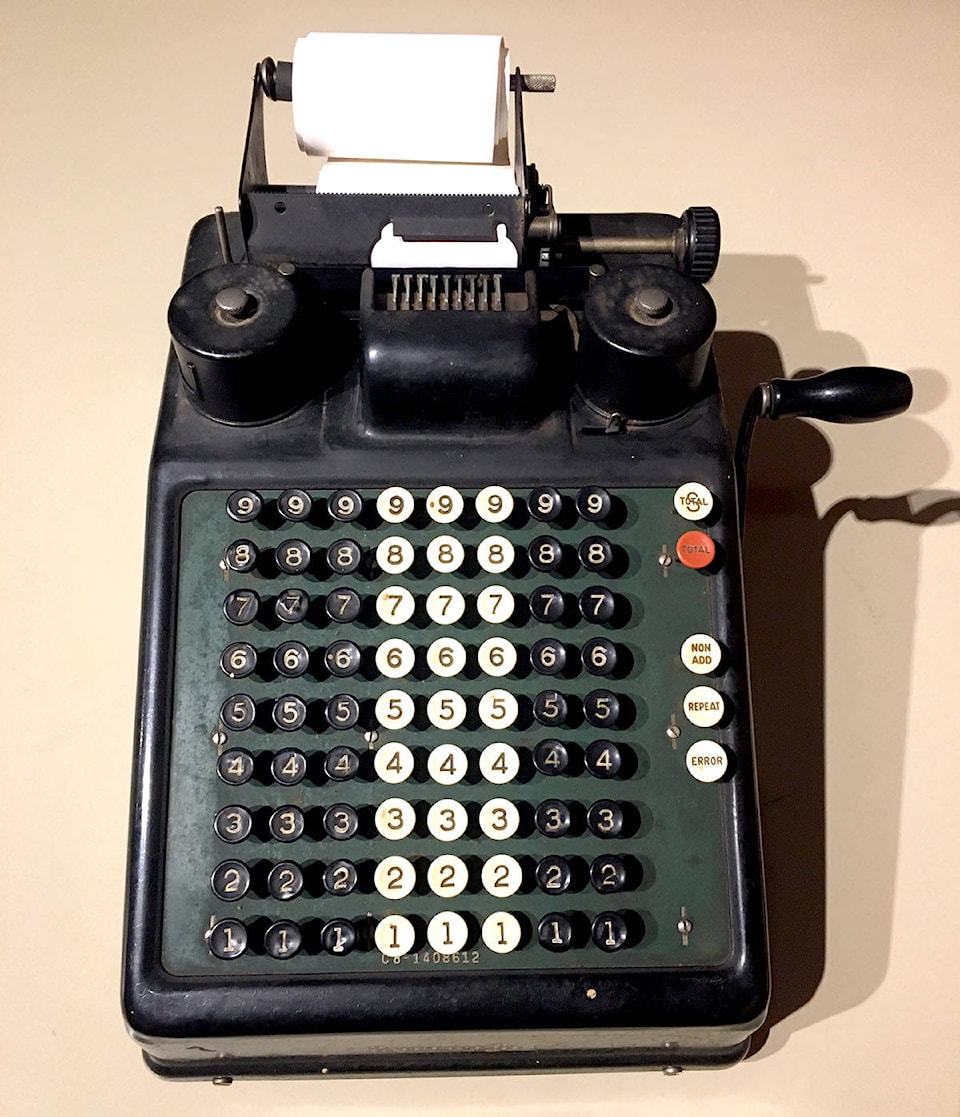Montana Stanley | Contributed
Two math-related additions came into the Sooke Region Museum’s artifact collection last month.
The first donation is a 1925 Burroughs Class 8 Adding Machine which belonged to Elizabeth (Betty) Jameson. Jamespn used it to perform calculations in an office in Vancouver and in her Avon business in Sooke.
This item was the standard for adding machines at the time, and the flagship product for the top manufacturer in the industry. It was considered the Burroughs “Portable” machine, weighing in at a mere 20 lbs.
Similar in appearance to a typewriter, the machine is a little over a foot long. It has black and white push keys that run vertically along the machine in columns set in a black metal case, with a hand crank on the proper right hand side.
Each column of keys represents a digit. The numbers are typed into the machine one at a time, from right to left, and the crank is pulled to add and print the results on a roll of paper at the top of the machine.
Burroughs did not attempt to make electronic calculators, but the company did go on to make early computers, and after a merge with Sperry Rand Corporation in 1986 is now a part of Unisys Corporation.
The second donation is a tool known as a soroban, or a type of abacus developed in Japan. The abacus was developed as a counting tool to count large numbers in ancient times.
The word abacus is a Latin word that comes from the Greek abax or abakon (meaning “table” or “tablet”). In Ancient Greek and Rome, most of the abaci were made of stones and metal.
The common structure of an abacus is a wood board with beads which slide along vertical wires inside a frame.
In the mid-16th century, the Chinese abacus had seven beads in each column, split into two decks, two in the upper, and five in the lower, and was just being introduced into Japan. It became very popular for Japanese merchants as a calculation tool in business.
In the early 1930s Japan, the abacus design was changed to a five-bead column, one bead in the upper deck and four beads in the lower deck, called the soroban.
The soroban helps to perform mainly addition, subtraction, multiplication and division. The vertical bars holding the beads determine the place value of the numbers represented by the counters. From the right to the left the columns represent ones, tens, hundreds and so on. Sliding the beads (called unit counters) up and down add and subtract numbers, the amount depending on the place value.
The Soroban is still used today by modern tellers, and can be faster than a calculator.
•••
Montana Stanley is the collections and exhibits manager of the Sooke Region Museum and Visitor Centre.
